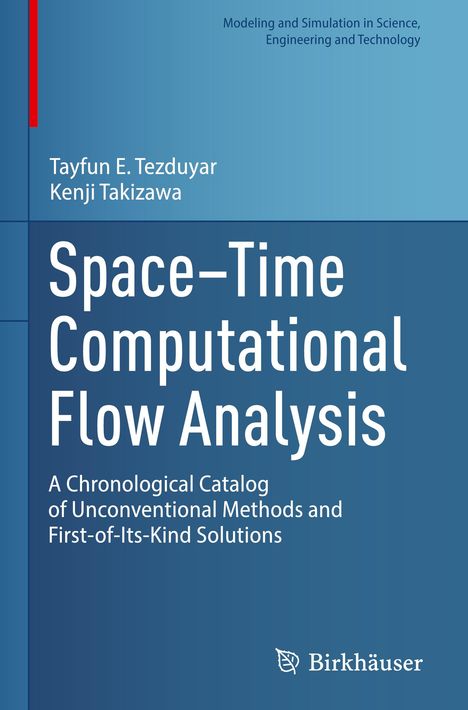Tayfun E. Tezduyar: Space-Time Computational Flow Analysis, Gebunden
Space-Time Computational Flow Analysis
- A Chronological Catalog of Unconventional Methods and First-of-Its-Kind Solutions
(soweit verfügbar beim Lieferanten)
- Verlag:
- Birkhäuser, 07/2025
- Einband:
- Gebunden
- Sprache:
- Englisch
- ISBN-13:
- 9783031887260
- Artikelnummer:
- 12349100
- Umfang:
- 316 Seiten
- Gewicht:
- 696 g
- Maße:
- 241 x 160 mm
- Stärke:
- 22 mm
- Erscheinungstermin:
- 3.7.2025
- Hinweis
-
Achtung: Artikel ist nicht in deutscher Sprache!
Klappentext
Space--Time Computational Flow Analysis (STCFA) was developed in 1990 in the context of flows with moving boundaries and interfaces, which is a wide class of problems that includes fluid--particle interactions, fluid--structure interactions (FSI), and free-surface and multi-fluid flows. It is a computational framework made of unconventional methods, which have evolved over the years as more unconventional methods were introduced to increase its scope and accuracy. It brought first-of-its-kind solutions in many classes of problems, including fluid--particle interactions in particle-laden flows, FSI in parachute aerodynamics, flapping-wing aerodynamics of an actual locust, ventricle-valve-aorta flow analysis, and car and tire aerodynamics. With these successes in so many classes of problems, the STCFA has reached a level of remarkable sophistication, scope, and practical value.
This monograph presents, for the first time, a chronological catalog of STCFA methods and solutions from their development to the present. Part I focuses on the STCFA in the context of finite element analysis, and Part II in the context of isogeometric analysis. The methods presented include complementary general-purpose methods that were introduced in the evolution of STCFA. All researchers working on or interested in space--time computations in fluid mechanics, FSI, and solid mechanics, including graduate students, will benefit from the wealth of powerful computational methods and impressive solutions they will find in the book.

